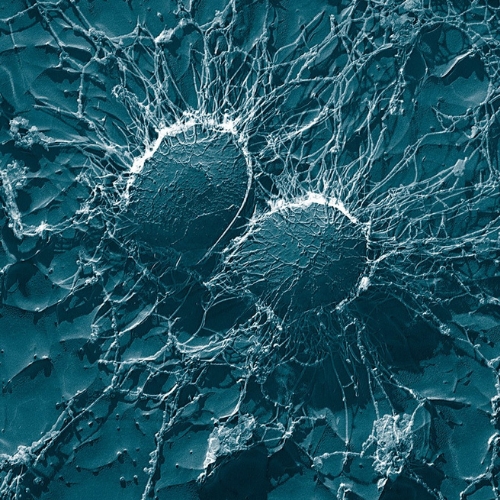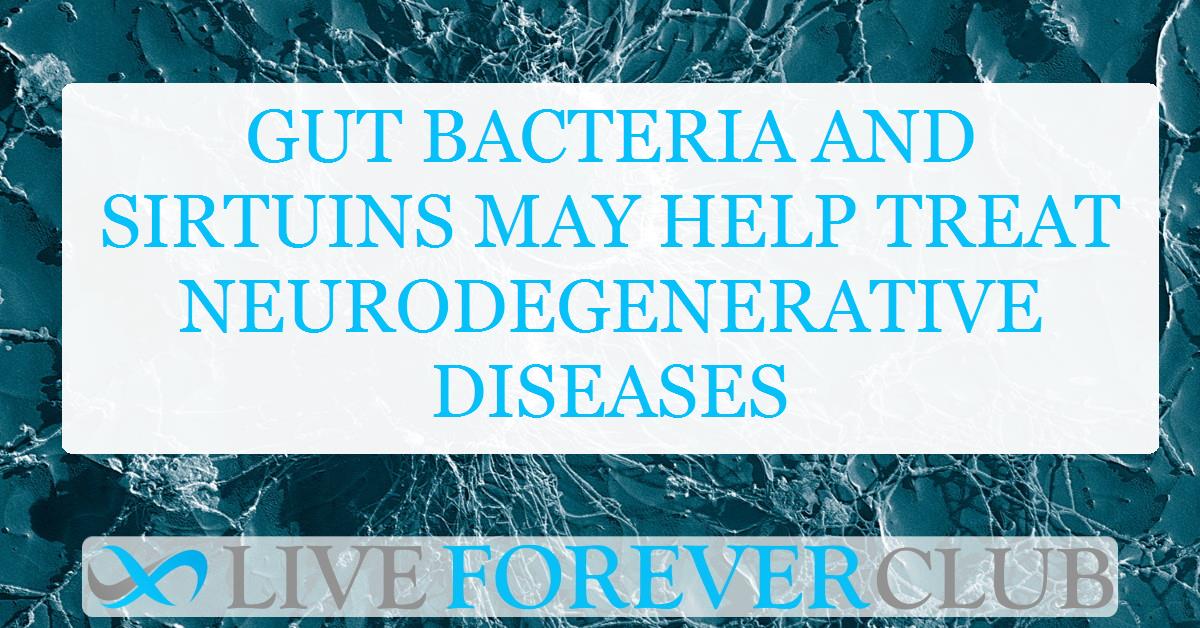Our brain’s health might be more connected to our gut than we ever imagined. Recent research highlights a unique interaction between the gut microbiome, a molecule called hydrogen sulfide (H₂S), and proteins called sirtuins. Together, they form a powerful "axis" that helps protect our neurons from damage, offering potential therapeutic strategies for neurodegenerative diseases like Alzheimer’s and Parkinson’s. Let’s dive into the science behind this axis and how it could shape the future of neurodegenerative disease treatment.
Gut Microbiota and Hydrogen Sulfide Production
The gut microbiome—a collection of trillions of microorganisms in our digestive system—plays a surprisingly vital role in brain health. These microorganisms produce numerous compounds that impact various bodily functions, from digestion to immunity. Among these compounds, hydrogen sulfide (H₂S) stands out for its impressive neuroprotective qualities.
While H₂S has traditionally been seen as a toxic gas, recent studies reveal that it’s crucial for cellular health in low concentrations. Within the gut, specific bacteria such as Desulfovibrio and Desulfobulbus generate H₂S by breaking down sulfur compounds. This production is heavily influenced by our diet, as sulfur-rich foods like garlic, onions, and cruciferous vegetables provide the raw materials bacteria need to produce H₂S.
What Makes Hydrogen Sulfide a Neuroprotective Agent?
Hydrogen sulfide plays several roles in promoting brain health, acting as a potent antioxidant, an anti-inflammatory agent, and a supporter of mitochondrial function—the powerhouses of our cells.
Antioxidant Action: H₂S directly neutralizes reactive oxygen species (ROS), which can cause cellular damage if left unchecked. It also activates cellular defense systems like glutathione and superoxide dismutase, which help reduce oxidative stress.
Mitochondrial Support: H₂S enhances mitochondrial biogenesis, the process of creating new mitochondria. This increases the cell’s ability to produce energy, which is crucial for neurons that have high energy demands. H₂S also maintains mitochondrial membrane potential, protecting cells from apoptosis (programmed cell death).
Inflammation Control: Neuroinflammation, or inflammation within the brain, is a key driver of neurodegenerative diseases. H₂S regulates this by inhibiting inflammatory molecules, such as NF-κB, and reducing cytokines that could lead to chronic neuroinflammation.
Role of Sirtuins
The sirtuin family of proteins plays an essential role in regulating cellular processes, including aging, energy metabolism, and inflammation. Sirtuins, especially SIRT1 and SIRT3, have attracted attention for their potential in neurodegenerative disease therapy. These proteins rely on NAD+, a coenzyme critical for cellular energy, and respond to low-energy states like fasting or caloric restriction by helping cells cope with stress.
SIRT1: This sirtuin is primarily found in the nucleus, where it regulates gene expression. It helps reduce inflammation by deacetylating the NF-κB complex and decreasing cytokine production. In Alzheimer’s models, SIRT1 lowers amyloid-beta levels and prevents tau protein aggregation, both hallmarks of the disease.
SIRT3: Located in mitochondria, SIRT3 plays a key role in keeping them healthy by reducing ROS and maintaining cellular energy metabolism. This support is vital for neurons, which are highly dependent on mitochondrial function for survival and activity.
Gut–Brain–Sirtuin Axis
Hydrogen sulfide doesn’t just work alone; it influences sirtuin activity through a process called sulfhydration, which alters sirtuin function and boosts their protective effects. For example:
Sulfhydration of SIRT1: This modification enhances SIRT1’s ability to combat oxidative stress by deacetylating antioxidant-related transcription factors like FOXO3, which then upregulate antioxidants. This action provides neurons with increased protection from oxidative damage.
Sulfhydration of SIRT3: By enhancing SIRT3 activity, H₂S boosts mitochondrial resilience, protecting neurons from stress and enabling efficient energy production. This synergy between H₂S and sirtuins helps maintain cellular health, reducing the damage that leads to neurodegeneration.
Gut Microbiome’s Influence on NAD+
The gut microbiota doesn’t just contribute H₂S; it also plays a vital role in maintaining NAD+ levels, essential for sirtuin activation. Beneficial gut bacteria produce metabolites like short-chain fatty acids (SCFAs), which support NAD+ production pathways. This connection is crucial because NAD+ availability tends to decline with age, which decreases sirtuin activity.
A balanced microbiome enhances NAD+ synthesis, which keeps sirtuins active, helping them perform their neuroprotective functions. However, an imbalance, or dysbiosis, can reduce NAD+ levels and compromise sirtuin activity, potentially accelerating neurodegeneration.
Potential Therapeutic Approaches
Given the importance of the H₂S–gut microbiota–sirtuin axis, scientists are exploring various therapies to target it, including dietary modifications, probiotics, and pharmacological agents.
Dietary Interventions: Sulfur-rich foods (e.g., garlic, onions) and NAD+ boosters (e.g., tryptophan) could help increase H₂S production and support NAD+ levels, enhancing sirtuin activity. Diets rich in polyphenols (like resveratrol) are also being studied for their sirtuin-activating effects.
Probiotics and Prebiotics: Beneficial bacteria such as Lactobacillus and Bifidobacterium support H₂S production and maintain a balanced gut microbiome. Prebiotics like inulin provide nutrients that beneficial bacteria need to thrive, indirectly supporting the H₂S–gut microbiota–sirtuin axis.
H₂S Donors and Sirtuin Activators: Pharmaceuticals like sodium hydrosulfide (an H₂S donor) and sirtuin-activating compounds (such as resveratrol) are promising as they directly enhance H₂S and sirtuin activity. These therapies aim to reduce oxidative damage, inflammation, and mitochondrial dysfunction, all of which contribute to neurodegeneration.
Challenges and Future Directions
Although the potential of the H₂S–gut microbiota–sirtuin axis in neuroprotection is promising, there are several challenges and questions to address:
Individual Variability: Each person’s microbiome is unique, influenced by genetics, diet, and lifestyle, which makes it challenging to predict responses to interventions. Personalized approaches may be necessary.
Delivery and Dosage: H₂S and sirtuin activators require careful dosing as high levels of H₂S can be toxic. Developing controlled-release systems could help manage this balance.
Long-Term Safety: Prolonged modulation of the gut microbiota or sirtuin activation might have unknown consequences. Studies on the long-term effects of such interventions are crucial.
Researchers are actively exploring these areas, and the next steps include clinical trials to determine the efficacy and safety of these therapies in real-world settings. Integrating dietary and pharmacological approaches may provide a holistic approach to maintaining the H₂S–gut microbiota–sirtuin axis, offering new hope in the battle against neurodegenerative diseases.
New Era in Neurodegenerative Disease Therapy?
The emerging insights into the H₂S–gut microbiota–sirtuin axis present a fascinating and hopeful avenue for tackling neurodegenerative diseases. By focusing on this interconnected system, scientists are uncovering ways to slow, and potentially even prevent, the devastating effects of diseases like Alzheimer’s and Parkinson’s.
As research advances, the combination of dietary interventions, probiotics, and pharmaceuticals may soon offer an integrated, multi-targeted therapy for improving brain health and enhancing quality of life for those affected by neurodegenerative disorders.
The study is published in the journal Pharmaceuticals. It was led by from University of Medicine and Pharmacy.







